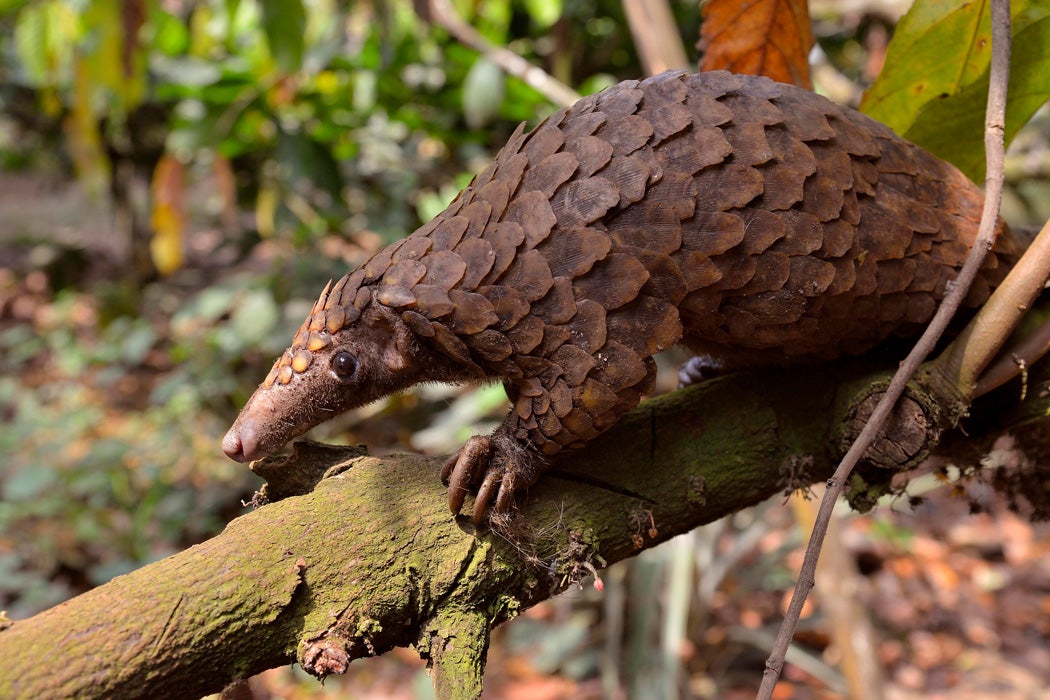One of the most trafficked animals on Earth is a mammal that you’ve probably never heard of. The pangolin resembles a cross between an armadillo and a scaly anteater. There are eight species, found across a swath of tropical Asia and Africa. The animals are shy and mainly nocturnal. Biologists have only a limited understanding of their behavior and ecology. Unfortunately, as a recent bust in Hong Kong shows, poachers and traffickers know a lot about them. Pangolins are heavily tracked in Asia, as their scales are desirable for use in traditional medicine, mostly in Vietnam and China.
Biologist Martha E. Heath lays out many fundamentals of pangolin biology in a 1995 study of Indian pangolins. Their signature scales cover all of the body except for the underside and the insides of the limbs. In fact, up to a third of the animal’s weight is just scales. Made of compressed hair, the scales never stop growing, to compensate for wear that occurs from abrasion. Pangolins use their sturdy claws to dig deep burrows; the same claws are also used to rend ant and termite nests. They seem to be fairly picky eaters, preferring certain species of ants and focusing on the eggs over the adult ants.
Pangolins are pretty adaptable to their environment; Indian pangolins living in very arid areas can go a long time without drinking water. Indian pangolins are mostly ground-dwelling, but in some forested areas they are avid tree climbers. Unfortunately for pangolins, however, when threatened they curl up into a tight scales-out ball, rather than climbing to safety. This technique is effective against a wild cat, but useless against poachers.
And poachers are a dire threat. According to a 2016 paper in Conservation and Society by environmental historian Alex Aisher, all species of pangolin are considered threatened or endangered, primarily because of trafficking. The illicit trade in China alone is worth hundreds of millions of dollars. Their scales are used in some traditional Asian medicine, and are believed to cure practically any malady. Pangolins have disappeared from much of their southeast Asian range, so poaching has expanded to Africa to keep up with demand.
Once a Week
Aisher believes that pangolins earned their dubious popularity simply by looking so weird; something so odd must have value. Perversely, as the animals become scarce and thus more expensive, they become even more sought-after in certain circles as a status symbol. Ever greater poaching efforts result in order to cash in on high prices, a devastating feedback loop that Aisher calls an extinction vortex.
It is a sad commentary that we know more about the illegal pangolin trade than we do about pangolins.







